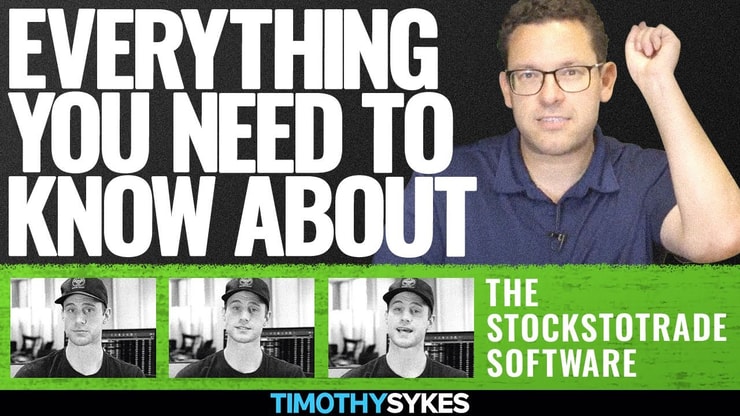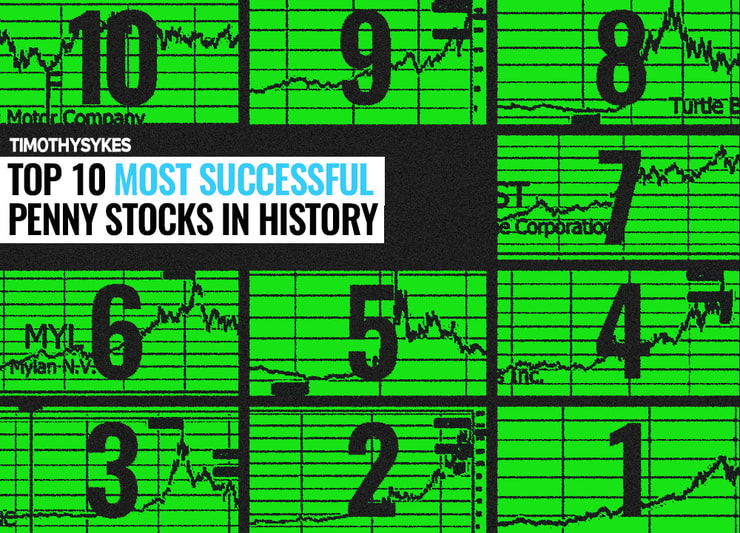Artificial Intelligence Technology Solutions Inc. (AITX) stock attracts attention because it combines cutting-edge AI-driven security solutions with the realities of penny stock volatility. For traders, this mix of growth potential and financial uncertainty creates both opportunity and risk. Understanding how to approach AITX means balancing the company’s progress with the lessons of market speculation.
For stocks more in my price range — check out my AI penny stock watchlist here!
You should read this article about AITX stock because it explains the company’s background, financial performance, recent news, and realistic forecasts so you can better evaluate its potential.
I’ll answer the following questions:
- What does AITX do as a company?
- How has AITX stock performed historically?
- What are the short-term and long-term forecasts for AITX stock?
- What risks should investors consider with AITX?
- What recent news or developments affect AITX stock?
- How strong is AITX’s financial performance?
- Is AITX stock at risk of delisting?
- Why is AITX stock so cheap compared to other stocks?
Let’s get to the content!
Table of Contents
Company History and Background of AITX
Artificial Intelligence Technology Solutions Inc. is a company that develops and deploys AI-powered products for security, monitoring needs, and operational efficiency. Through its primary subsidiary, Robotic Assistance Devices (RAD), it builds robotic units and software platforms like RADCam that serve healthcare, education, logistics, and critical infrastructure clients. Headquartered in Ferndale, Michigan, AITX has positioned itself as a technology-driven services provider with recurring revenue built on unit deployments.
The company’s CEO, Steve Reinharz, has emphasized product development, partnerships, and customer support as key to scaling adoption. With subsidiaries focusing on different robotic product lines, AITX attempts to address gaps in monitoring and guarding services. In trading terms, companies like AITX often attract speculative buyers because of strong ideas and technology potential. I teach traders that it’s important to understand not only what a company does, but whether its business model can sustain growth over time.
AITX Stock Overview
AITX stock trades over the counter under the ticker AITX, not on a major exchange like Nasdaq or NYSE. This immediately sets expectations for traders. Penny stocks in this environment are often thinly traded, with sharp moves in price driven by news or volume spikes. At a recent market cap of around $20 million, the equity is highly speculative.
The stock price has seen wide swings tied to announcements about deployments, new products, or credit facilities. For example, the $5 million revolving credit facility signed in July 2025 supported growth without issuing new shares, avoiding dilution. As I’ve taught for years, traders should focus on liquidity, chart patterns, and volume trends. These factors matter more in speculative shares than traditional valuation ratios like EPS or EBITDA. With AITX, you are trading volatility more than fundamentals.
In trading, especially with volatile penny stocks like AITX, real-time data is critical for making informed decisions.
When it comes to trading platforms, StocksToTrade is first on my list. It’s a powerful day and swing trading platform with real-time data, dynamic charting, and a top-tier news scanner. I helped to design it, which means it has all the trading indicators, news sources, and stock screening capabilities that traders like me look for in a platform.
Grab your 14-day StocksToTrade trial today — it’s only $7!
Comparative Historical AITX Stock Performance
AITX stock performance over recent years shows the typical volatility of penny stocks tied to developing companies. Historically, shares have spiked on product launches, news of client deployments, or debt settlements, only to pull back as traders took profits. For example, quarterly revenue growth of 57% and gross profit growth of 80% in Q1 FY 2026 lifted the stock temporarily, but persistent losses and liquidity concerns kept long-term performance weak.
Looking at charts and volume data can help highlight recurring patterns. Spikes often fade, which makes timing critical. As someone who has studied thousands of penny stock moves, I stress that history shows more failed rallies than sustained uptrends in companies like AITX. Traders should view past performance as context for short-term speculation, not as a reason to hold expecting consistent long-term growth.
AITX Stock Forecast and Predictions
Forecasts for AITX stock depend on both company execution and market sentiment. Management projects profitability in Q2 FY 2026 and positive operational cash flow by the end of Q3 FY 2026. These are strong milestones if achieved, but traders know that small-cap projections often face delays. Analyst models like Spark’s AI-driven forecast currently label AITX as an underperform rating due to liquidity issues and valuation concerns.
From a trading perspective, predictions should be treated as potential catalysts rather than guarantees. Short-term momentum can come from financial news or new client deployments. Long-term forecasts require sustained revenue and debt reduction. I remind traders that most penny stocks struggle to meet growth promises, so it’s important to trade the trend rather than blindly believing in projections.
My best piece of advice is — USE AI TO TRADE AI!
XGPT is the AI tool my team and I have built to spot high-odds stock setups — faster, smarter, and more efficiently than any human can. You don’t have to be a math genius or some tech wizard. XGPT analyzes patterns, price action, and data the way my top students do… only it does it 1,000x faster.
Whether you like it or not, AI is part of modern trading. Other traders are already using it, shouldn’t you?
Short-Term vs Long-Term Forecast
The short-term forecast for AITX stock centers on upcoming quarters where profitability and debt settlements may shift sentiment. Traders could see price volatility around earnings releases or major contract wins. For example, a healthcare provider’s order of seven RIO 360 solar-powered security towers contributed to an expected revenue boost of $120,000 to $200,000 per month. These short-term events can create trading opportunities.
The long-term forecast depends on whether AITX can convert its sales pipeline, which includes Fortune 500 companies, into recurring revenue streams. Sustained growth in revenue, gross profit, and EBITDA would be required to build real shareholder value. Based on two decades of trading, I’ve seen that few penny stocks sustain long-term uptrends, so while growth projections are encouraging, traders should remain cautious and nimble.
Risk Factors and Speculative Warnings
Risk factors with AITX stock include high leverage, liquidity challenges, and reliance on raising capital through credit or equity when needed. Although the $5 million credit facility reduced immediate dilution, financial performance still depends on scaling product deployments and sustaining revenue. Negative EPS and the lack of dividends highlight that profitability is not consistent yet. For traders, these risks translate to potential price collapses if growth slows.
AITX is also subject to speculative trading, where manipulation and promotional news can inflate stock price temporarily. That’s why I teach traders to focus on price action and volume instead of hype. If the market cap rises quickly on thin volume, the risk of sharp reversals increases. In penny stock trading, the most common mistake beginners make is ignoring these warning signs while chasing ideas that sound good on paper.
Recent AITX News and Developments
Recent AITX news has centered on revenue growth, debt settlements, and financing agreements. In Q1 FY 2026, AITX reported $1.85 million in revenue, up 57% year-over-year, with gross profit climbing 80%. The company also eliminated nearly $4.8 million in debt through a favorable settlement, supporting expectations of net profitability in Q2 FY 2026. These announcements show progress in improving financial stability.
On July 17, 2025, AITX signed a $5 million revolving credit facility, which provides growth capital without issuing new shares. The ability to fund deployments while avoiding dilution can help improve trader confidence. News like this often creates short-term surges in stock price, but history shows these spikes rarely last. As I teach, traders must treat news as a trading catalyst, not a reason to hold indefinitely.
Financial Performance of AITX
The financial performance of AITX highlights both progress and ongoing challenges. In its most recent quarter, the company achieved record gross profit of $1.23 million, up 80% from the prior year. Recurring rental revenue grew 66% year-over-year, showing traction in higher-value unit deployments. EBITDA remains negative, but management projects operational cash flow turning positive later in FY 2026.
Revenue, profitability ratios, and equity metrics matter, but for traders, the focus should stay on whether financial performance sparks price momentum. AITX’s settlement of nearly $4.8 million in debt shows management addressing capital pressures. Still, until EPS turns positive, risks remain. Over the years, I’ve seen many penny stocks improve quarterly numbers without ever reaching sustainable profitability, so financial progress should be viewed through a trader’s lens of short-term opportunity.
Key Takeaways
- AITX stock represents a speculative AI-driven security solutions company with strong product ideas but ongoing financial hurdles.
- Revenue growth and gross profit increases are encouraging, yet liquidity issues and negative earnings remain barriers.
- For traders, AITX offers volatility around news and financial reports, but long-term holding carries high risk.
This is a market tailor-made for traders who are prepared. AI stocks thrive on volatility, but it’s up to you to capitalize on it. Stick to your plan, manage your risk, and don’t let FOMO drive your decisions.
These opportunities are fast and unpredictable, but with the right strategy, you can make them work for you.
If you want to know what I’m looking for — check out my free webinar here!
More Breaking News
- Intel’s Stock Tumbles: Market Plunge Analysis
- BellRing Brands Stock: Time to Buy?
- Aurora Stock Faces Strong Headwinds
- D-Wave Quantum Shares Decline: Market Troubles Ahead?
Frequently Asked Questions
How Can Analysis and Content Like Videos Help Traders Understand AITX?
Analysis, content, and videos can provide traders with context on AITX’s stock price movements, financial updates, and product deployments. Watching trading videos or reviewing technical analysis content helps investors and traders identify patterns and potential entry or exit points. I always remind students that using these tools should support disciplined decision-making, not replace it.
What Type of Return Could an Investor Expect from AITX?
The return on AITX stock depends entirely on trading execution, not on long-term investment reliability. Some investors may see quick gains if they buy and sell during news-driven spikes, while others risk losses if they hold too long. Based on my trading experience, the key is to treat penny stocks like AITX as short-term trades, not as guaranteed investments.
Should AITX Be Part of an Investment Portfolio?
Adding AITX to an investment portfolio involves high risk because the company operates as a speculative penny stock. For traders, it’s more effective to treat AITX as a short-term buy or sell opportunity rather than a core portfolio holding. I teach traders to keep risky positions small so they don’t overwhelm overall performance.
What Sector Does AITX Operate In and How Many Employees Support It?
AITX operates in the technology and security services sector, focusing on AI-powered monitoring and robotics solutions. With employees based in Ferndale and across its subsidiaries, the company balances development, deployments, and client support. For finance-minded traders, knowing the sector and company size helps gauge both market potential and the limits of its resources.












Leave a reply